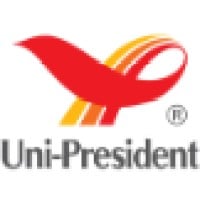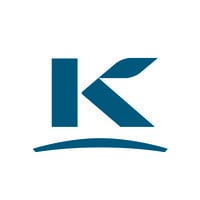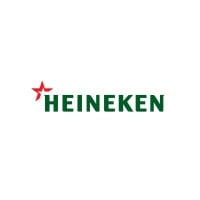Company Cyber Security Posture
NANA
NA Company Details
NA
NA
NA
NA
NA
NA
Scan still pending
NA
NA
Between 200 and 800
This score is AI-generated and less favored by cyber insurers, who prefer the TPRM score.
 NA Global Score
NA Global Score.png)

Company Scoring based on AI Models
| Model Name | Date | Description | Current Score Difference | Score |
|---|---|---|---|---|
| AVERAGE-Industry | 03-12-2025 | This score represents the average cybersecurity rating of companies already scanned within the same industry. It provides a benchmark to compare an individual company's security posture against its industry peers. | N/A | Between 200 and 800 |
Company Cyber Security News & History
| Entity | Type | Severity | Impact | Seen | Url ID | Details | View |
|---|
Company Subsidiaries

NA
Access Data Using Our API

Get company history
.png)
NA Cyber Security News
Keurig Dr Pepper’s CIO On Building A Future-Ready Beverage Giant
Central to Keurig Dr Pepper's digital transformation is its focus on harnessing data to drive decision-making across the organization. Gigerich ...
Keurig Dr Pepper Inc.'s (NASDAQ:KDP) Stock Has Shown Weakness Lately But Financial Prospects Look Decent: Is The Market Wrong?
Keurig Dr Pepper (NASDAQ:KDP) has had a rough three months with its share price down 4.0%. But if you pay close attention, you might find ...
Keurig Dr Pepper Inc. SEC 10-K Report
Keurig Dr Pepper Inc. (KDP), a leading beverage company known for its diverse portfolio of brands including Dr Pepper, Canada Dry, ...
Cybersecurity jobs available right now: June 10, 2025
As a Network and IT Security Engineer, you will be responsible to protect IT systems and networks from potential threats, vulnerabilities, and ...
2024 Processor of the Year: Keurig Dr Pepper, Energized
Once a soft drink company, now part coffee company, recent acquisitions are making it a leader in the energy drinks space.
Keurig Dr Pepper raises its bets on energy drinks with $990 mln deal for Ghost
Ghost was founded as a lifestyle sports nutrition brand in 2016 by Dan Lourenco and Ryan Hughes. It will be a part of Keurig Dr Pepper's U.S. ...
Keurig Dr Pepper Earnings Preview: What To Expect
Keurig Dr Pepper is expected to release its third-quarter earnings later this month, and analysts anticipate a single-digit bottom-line ...
Keurig Dr Pepper, Inc (KDP) Q1 Earnings and Revenues Top Estimates
Keurig Dr Pepper (KDP) delivered earnings and revenue surprises of 10.53% and 2.01%, respectively, for the quarter ended March 2025.
Fiscal Year 2024 in Review: Key Takeaways and Predictions from SEC Enforcement Actions Against US Public Companies
On November 22, 2024, the US Securities and Exchange Commission (SEC) released its enforcement results for fiscal year ("FY") 2024 (October ...

NA Similar Companies

Nestlé
As the world’s largest food and beverage company we are driven by a simple aim: unlocking the power of food to enhance quality of life for everyone, today and for generations to come. To deliver on this, we serve with passion, with a spirit of excellence, offering products and services for all stage

Compass Group
Compass Group PLC is a world leading food and support services company, which serves meals to millions of people in c.35 countries and employs and engages more than 550,000 people globally. The Company specialises in providing food and a range of support services across the core sectors of Business

Uni-President Cor. Ltd.
Uni-President China Holdings Limited is the second largest tea, largest milk tea ready-to-drink, and the second largest instant noodle manufacturer and supplier in China. It is the Mainland China subsidiary of Uni-President Enterprises Corporation, the largest processed food producer in Taiwan. The

Kerry
Every day, millions of people throughout the world consume foods and beverages containing Kerry’s taste and nutrition solutions. We are committed to making the world of food and beverage better for everyone, and dedicated to our Purpose, Inspiring Food, Nourishing Life. At Kerry, we are proud to

Perfetti Van Melle
Perfetti Van Melle is a privately owned company, producing and distributing candies and chewing gums in more than 150 countries worldwide. Employing over 17.000 people and operating 37 companies throughout the world, Perfetti Van Melle has a true global reach: it is present in the Asia Pacific Reg

The HEINEKEN Company
HEINEKEN - the world's most international brewer. It is the leading developer and marketer of premium beer and cider brands. Led by the Heineken® brand, the Group has a portfolio of more than 300 international, regional, local and speciality beers and ciders. We are committed to innovation, long-ter

Frequently Asked Questions
Explore insights on cybersecurity incidents, risk posture, and Rankiteo's assessments.
NA CyberSecurity History Information
How many cyber incidents has NA faced?
Total Incidents: According to Rankiteo, NA has faced 0 incidents in the past.
What types of cybersecurity incidents have occurred at NA?
Incident Types: The types of cybersecurity incidents that have occurred include .
Additional Questions
What Do We Measure?
















Every week, Rankiteo analyzes billions of signals to give organizations a sharper, faster view of emerging risks. With deeper, more actionable intelligence at their fingertips, security teams can outpace threat actors, respond instantly to Zero-Day attacks, and dramatically shrink their risk exposure window.
These are some of the factors we use to calculate the overall score:
Identify exposed access points, detect misconfigured SSL certificates, and uncover vulnerabilities across the network infrastructure.
Gain visibility into the software components used within an organization to detect vulnerabilities, manage risk, and ensure supply chain security.
Monitor and manage all IT assets and their configurations to ensure accurate, real-time visibility across the company's technology environment.
Leverage real-time insights on active threats, malware campaigns, and emerging vulnerabilities to proactively defend against evolving cyberattacks.




